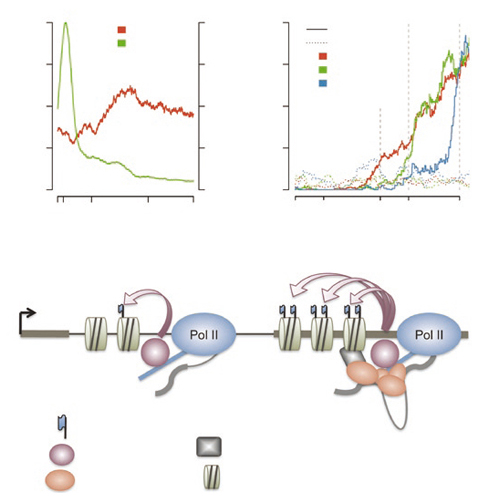Splicing enhances recruitment of methyltransferase HYPB/Setd2 and methylation of histone H3 Lys36
24-Jul-2011
Nature Structural & Molecular Biology, 2011, 18, 977 - 83 published on 24.07.2011
Nature Structual & Molecular Biology, online article
Nature Structual & Molecular Biology, online article
Several lines of recent evidence support a role for chromatin in splicing regulation. Here, we show that splicing can also contribute to histone modification, which implies bidirectional communication between epigenetic mechanisms and RNA processing. Genome-wide analysis of histone methylation in human cell lines and mouse primary T cells reveals that intron-containing genes are preferentially marked with histone H3 Lys36 trimethylation (H3K36me3) relative to intronless genes. In intron-containing genes, H3K36me3 marking is proportional to transcriptional activity, whereas in intronless genes, H3K36me3 is always detected at much lower levels. Furthermore, splicing inhibition impairs recruitment of H3K36 methyltransferase HYPB (also known as Setd2) and reduces H3K36me3, whereas splicing activation has the opposite effect. Moreover, the increase of H3K36me3 correlates with the length of the first intron, consistent with the view that splicing enhances H3 methylation. We propose that splicing is mechanistically coupled to recruitment of HYPB/Setd2 to elongating RNA polymerase II.











